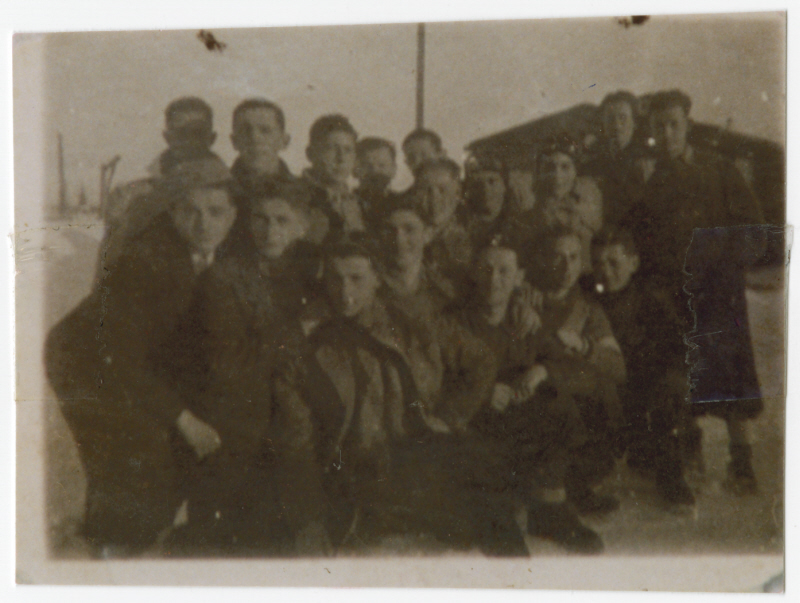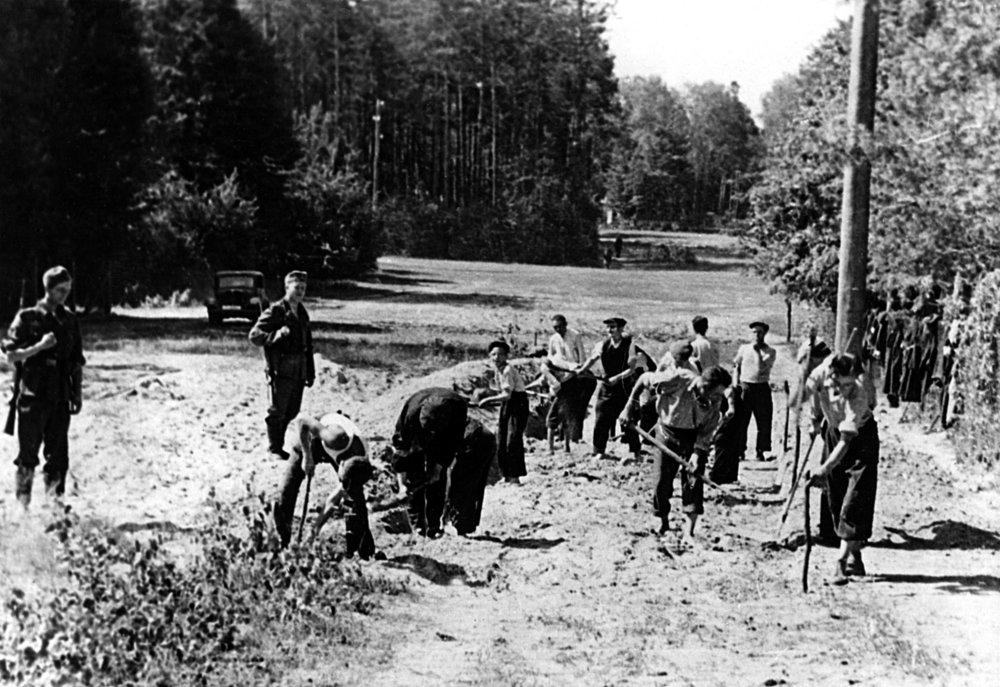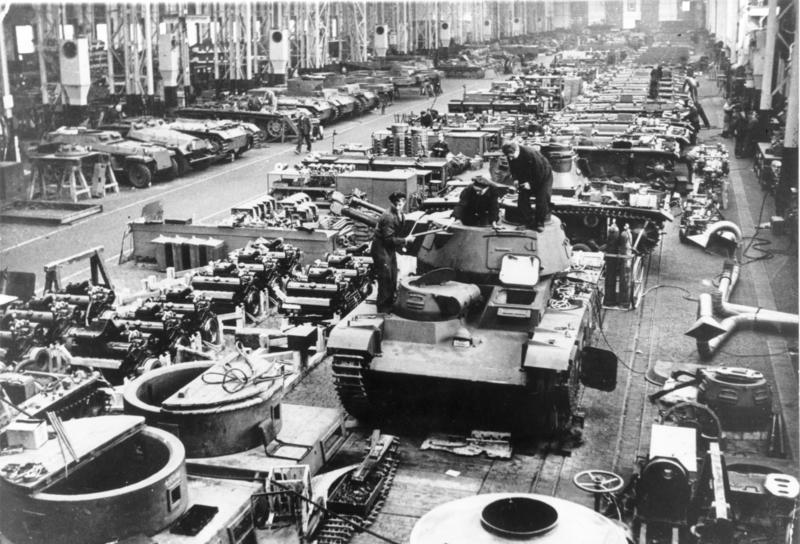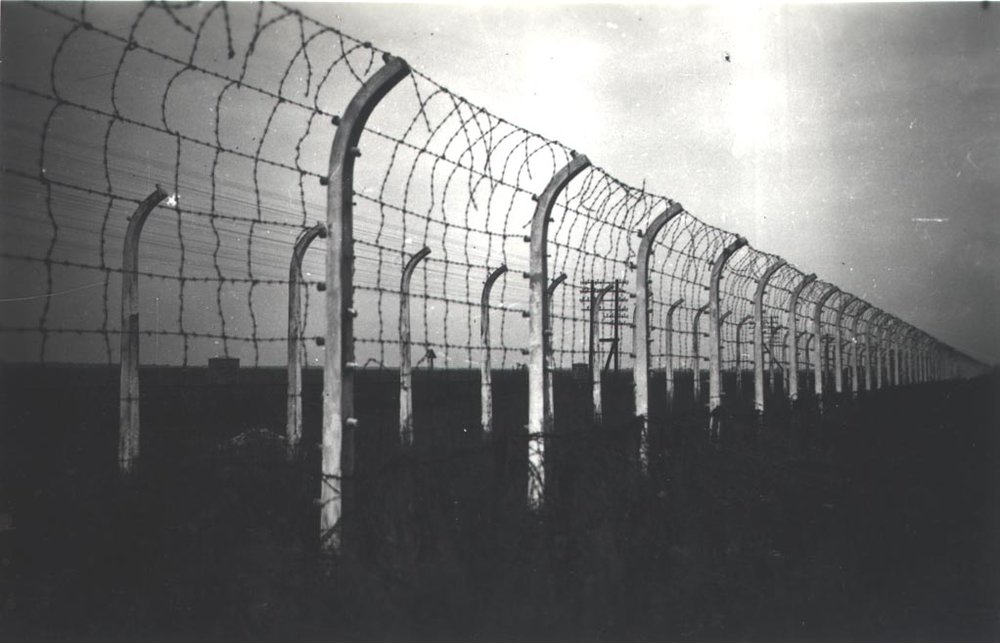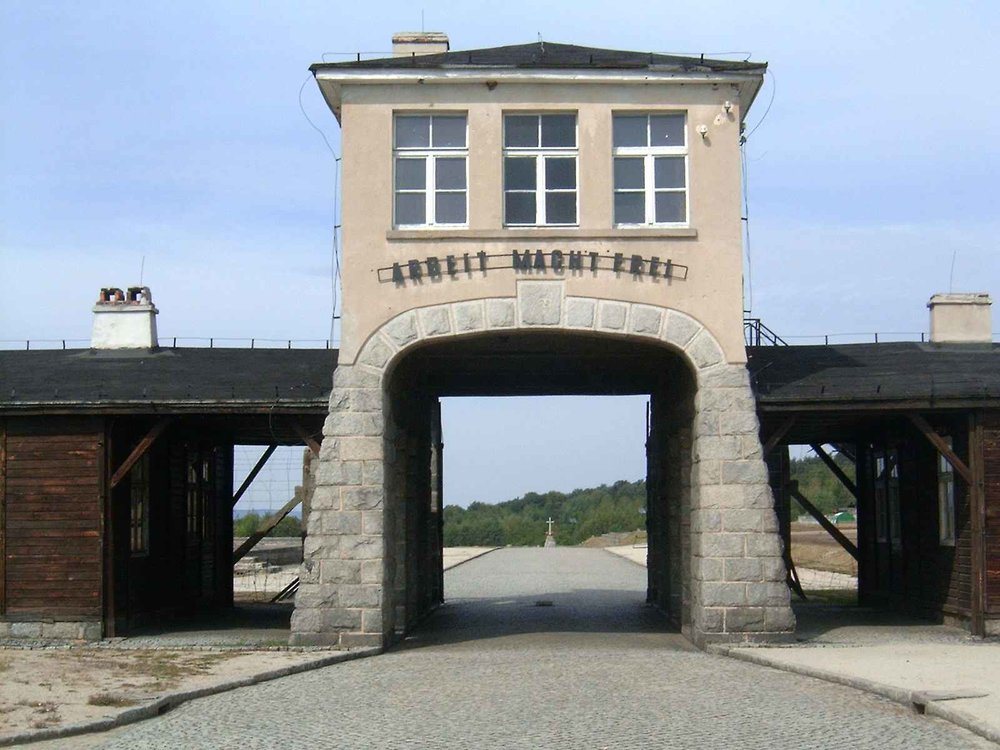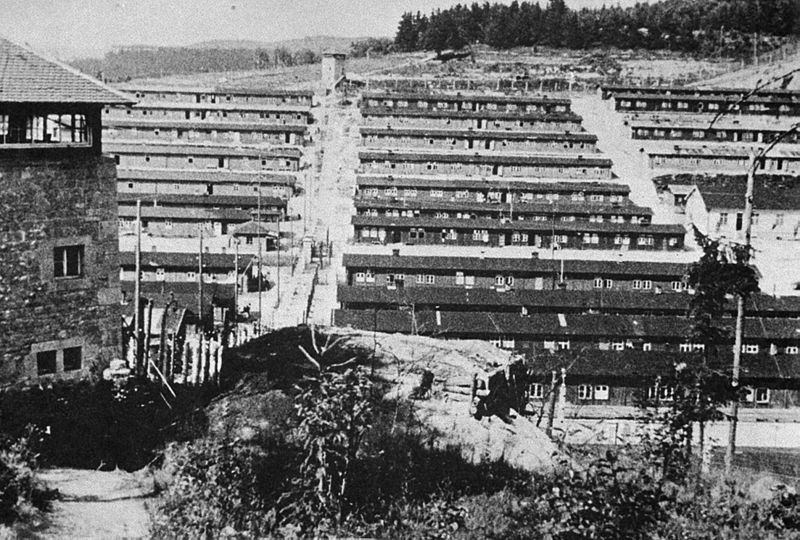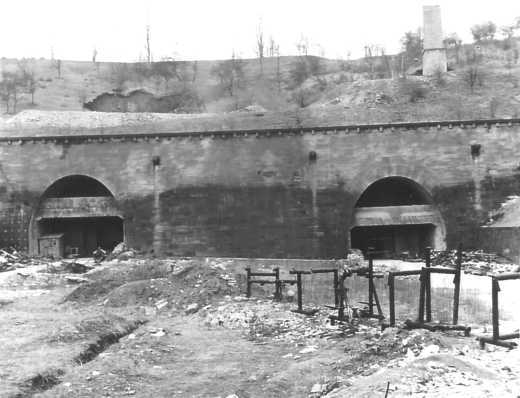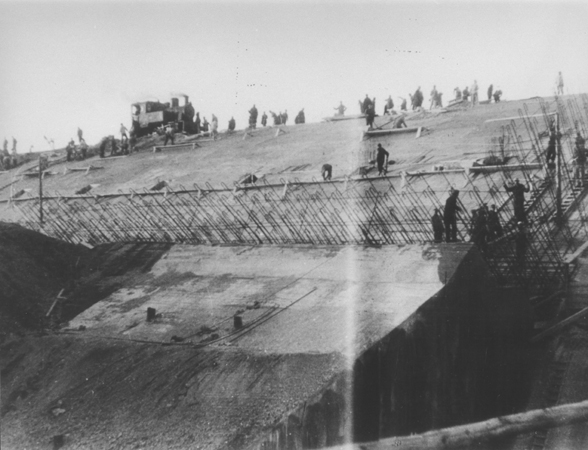EXCERPT FROM THE LONG NIGHT
Grünheide
“A few of the strongest and most capable young men were working in a pit clearing muck and dirt with an excavator. However, one day there was a collapse and a bloody body emerged from the pit. Anxiously they searched for the medical orderly to care for the injured man but there was only one medical orderly available for all the working groups. When the guards discovered that a man had been injured, they ordered two young men to carry the injured man to the cement hut.
I as the wagon-greaser also had access to this hut and recognised the injured man, Salomon Dunkelblum. He was a tall, slim, strong man with a ready smile for his friends and very well-liked by all of us. Since he was a capable worker he enjoyed a certain respect from the pit boss. Now he presented as a pitiful sight. He lay there covered in blood and quietly groaning. Blood flowed from a large wound at the back of his head, staining his work clothes and a collar of blood accumulated around his neck. The medical orderly tried to stem the bleeding and bind his wound, but the blood soaked through the bandages. The medical orderly realised his powerlessness and turned to the guard and begged to send the injured man to a doctor or a hospital, so that the dangerous bleeding could be stopped.
The guard’s response to this plea was to send everyone back to work and he ordered the medical orderly away. The groaning of our bleeding friend was like a knife in our hearts, and we were filled with bitterness and resentment. A little while later, I sought an opportunity to approach the cement hut. The groaning had ceased and everyone approaching the hut was driven away. Finally, it became clear to us what this signified. Instead of sending for help they had let our friend bleed to death.
When the working day came to an end, our group assembled for the march back to camp. A guard accompanied by two strong young men entered the barracks where Dunkelblum lay. His rigid corpse was shrouded in cement sacks and carried out on a long board. Dunkelblum showed no sign of life. With clenched fists we carried our first dead back to camp. We were greatly troubled by the death, what we felt was pity and sorrow. At the same time we felt oppressed by gloom as we bore our friend’s corpse and any remaining hope to the grave. Until then, we had believed we were living in a labour camp with the expectation of being treated like ordinary workers. Dunkelblum’s death demonstrated clearly to us that we were merely cheap labour without any claim for help and without rights.”
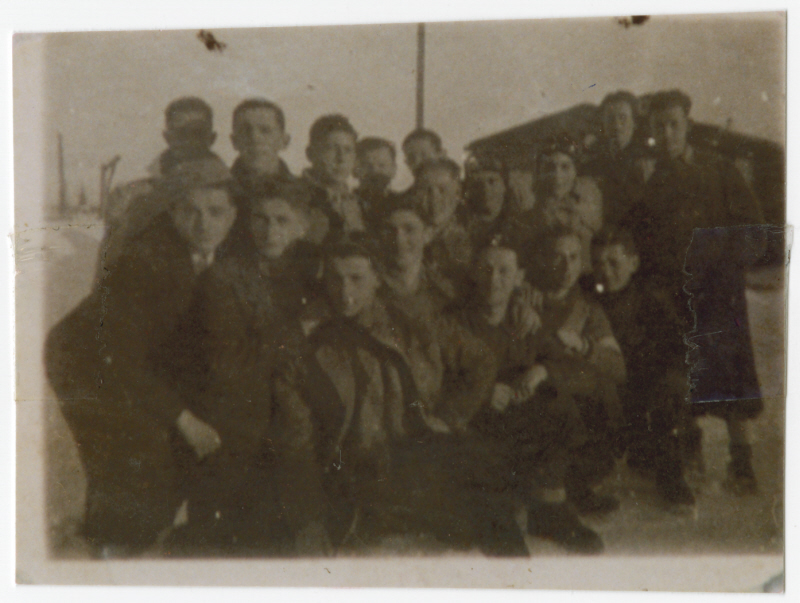
Jewish forced labourers at Gogolin Reichsautobahnlager (RABL) in 1941. This camp was 30 kilometres further up the A4 from Grünheide RABL. [United States Holocaust Memorial Museum, courtesy of Henryk Glucksman]

